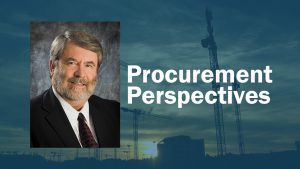The executive vice-president and group head of major projects at Infrastructure Ontario (IO) is defending the Alternative Financing and Procurement (AFP) model, in response to criticism by the Auditor General (AG) in a report late last year.
"I think with the Auditor General, for the most part the most important thing is to read the whole report. You can’t pause on one little excerpt, but that’s the part that got the headlines," said John McKendrick, during an IO Update hosted recently by the Ontario General Contractors Association (OGCA). "If you read the whole report it’s actually not that bad. The NDP had taken that $1.8 billion number and that was front page the next day. They actually made some good comments and there are a lot of things in there we agree with."
McKendrick made this statement recently at the 2015 OGCA Construction Symposium. He provided an update on the latest status of IO projects and discussed the long term plans for future infrastructure programs in Ontario.
Ontario AG Bonnie Lysyk released the 2014 annual report last December. It included a chapter on IO’s AFP program, which uses the public-private partnership (P3) model.
The report is critical of the AFP program, which resulted in negative media coverage.
"For 74 infrastructure projects (either completed or under way) where Infrastructure Ontario concluded that private-sector project delivery (under the AFP approach) would be more cost effective, we noted that the tangible costs (such as construction, financing, legal services, engineering services and project management services) were estimated to be nearly $8 billion higher than they were estimated to be if the projects were contracted out and managed by the public sector," said Lysyk in the report.
However, McKendrick said it is important to understand that this $8-billion difference was more than offset by IO’s transfer of $14.6 billion worth of risks associated with the public sector directly contracting out and managing the construction and, in some cases, the maintenance of these 74 facilities.
According to Lysyk’s report, IO estimated the risk of having the projects delivered late and over budget were about five times higher if the public sector directly managed these projects, compared to having the private sector manage the projects.
IO valued the cost of the risks under public sector delivery to be $18.6 billion and the risks under AFP delivery to be $4 billion, for a difference of $14.6 billion.
In valuing these risks, McKendrick said IO estimates that overall there is $6.6 billion in savings by using the AFP model. This is what IO calls "value for money."
McKendrick questions the AG’s assumption that the public sector can deliver projects on time and on budget, because this means there is no risk with the traditional procurement method.
"That’s a big if. To ignore the second part about of the equation about the risks is just ridiculous. There are a lot of risks on projects. Its real and it’s out there and we will continue to refine it," he said. "The whole idea of the financing in the $8B number is when a project company or contractor borrows that money, if you don’t finish on time it’s your risk. If you can’t pay the bank on time, the interest clock ticks up and you got to pay it."
McKendrick argues there are lots of examples of public sector infrastructure projects that have been delayed and gone over budget. For example, the Spadina subway extension is currently $400 million over budget and delayed by almost two years.
Lysyk agrees. However, she concluded there is no empirical data supporting the key assumptions used by IO to assign costs to specific risks. IO relies on the judgment and experience of external advisers to make these cost assignments, which makes them difficult to verify.
For this reason, Lysyk’s main recommendation is that IO gather data on actual cost experience from recent public-sector infrastructure procurements and AFPs, in order to revise the value for money methodology. This will ensure the valuation of risks assumed to be retained under both the AFP and public-sector delivery models are well justified.
According to McKendrick, IO is going to implement all ten of the recommendations contained in the AG’s 2014 annual report.







Recent Comments
comments for this post are closed